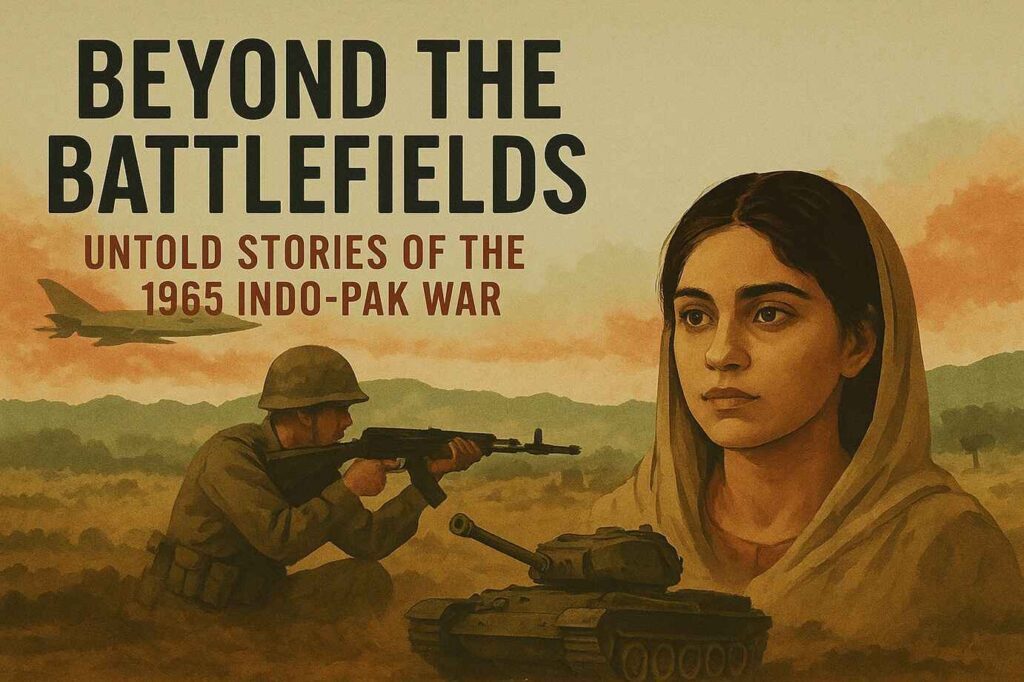Beyond the Battlefields:
Untold Stories of the 1965 Indo-Pak War
“When the enemy knocked on our doors in 1965, We answered with unity, faith, and sacrifice”
The September 1965 War was more than just a clash of armies — it was the moment when Pakistan’s spirit was tested, and every man, woman, and child became part of the struggle. To truly understand why this war was fought, we must look beyond maps and borders, and into the hearts that beat fiercely for their homeland.
This untold story begins with the Partition of 1947, when unresolved disputes over Kashmir and Hyderabad (Deccan) sowed the seeds of hostility between the two nations. Within a year, the first war of 1948 erupted, ending with a United Nations-brokered ceasefire. Yet Kashmir remained a burning wound — an unfinished chapter that poisoned relations and would once again ignite into bloodshed in 1965.”
Seventeen years later, Pakistan once again confronted an enemy three times its size. The Indian advance towards Lahore was met with fierce resistance at every sector, while the armoured divisions at Sialkot turned into a wall of steel that halted further progress. In the skies, Pakistan Air Force pilots, led by daring heroes like M.M. Alam, ensured aerial dominance. The Indian generals who had boasted of having tea at Lahore Gymkhana were instead compelled to retreat.
Every year on 6th September—Defense Day—Pakistan remembers not just the battles, but also the untold sacrifices of our brave heroes whose courage became the heartbeat of a nation.
The Road to 1965 War – From Partition to Rann of Kutch
The Indo-Pak War of 1965 did not come out of nowhere. It was the result of decades of mistrust and conflict rooted in Partition. The dispute over Kashmir had already drawn blood in 1948, and tensions never truly settled. Even after the 1948 ceasefire, Kashmir remain the heated issues between both countries.
April 1965; This time the spark came from an unlikely place: the barren salt marshes of the Rann of Kutch. Following the 1947 partition, the Rann of Kutch’s border remained undefined, with India asserting it belonged to Kutch and Pakistan claiming it was part of the Sindh province. The initial skirmishes involved border police and escalated into the armed forces of both nations engaging in conflict. The conflict ultimately ended in June 1965 after UN involvement.
The skirmishes in the Rann of Kutch were more than just an isolated border dispute; they became the spark that set the stage for a much larger confrontation. What began as a border clash soon transformed into a spark that ignited the larger conflict. Within just a few months, these tensions reached their boiling point, culminating in the full-scale war that erupted on 6th September 1965—when India launched attacks on multiple fronts — Lahore, Sialkot, Sargodha, Kasur, and the Sindh–Rajasthan desert sector — but the fiercest and most decisive battles were fought on the major fronts of Lahore, Sialkot, and Sargodha.
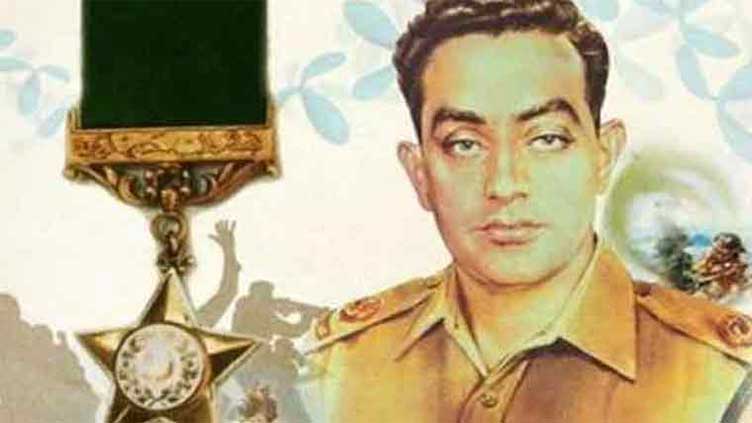
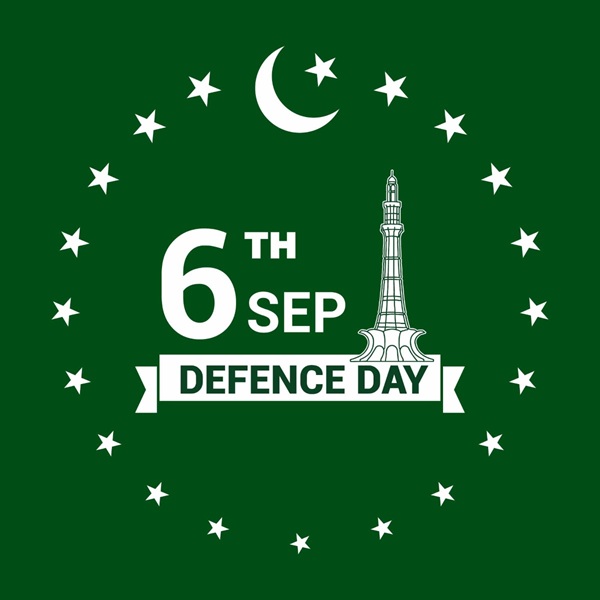
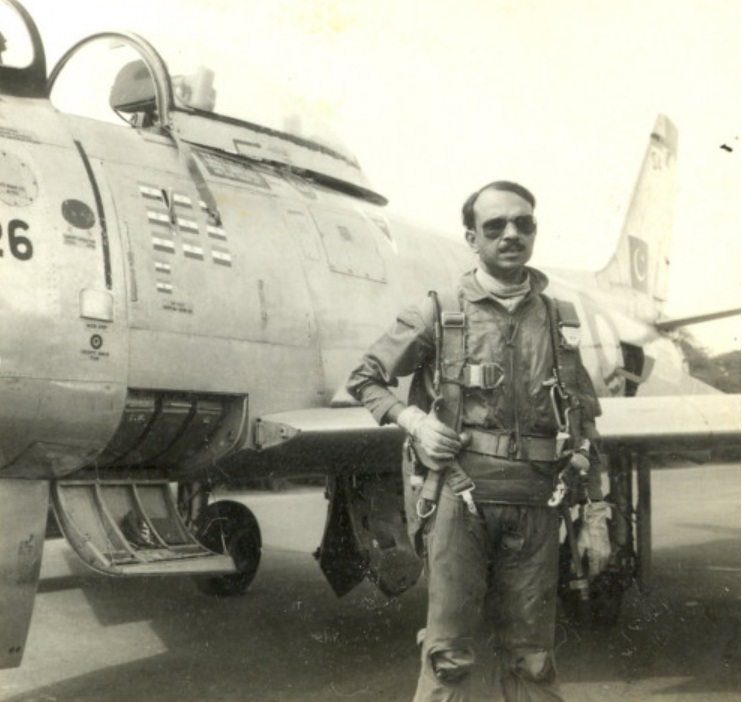
Lahore’s Guardian – Major Raja Aziz Bhatti Shaheed
When the war began on 6th September 1965, India struck directly at Lahore, believing its capture would break Pakistan’s spirit. The Indian generals openly declared they would be celebrating victory at Lahore Gymkhana by nightfall.
But Lahore was not undefended. At the Burki sector, one man became the wall that stood between Lahore and defeat—Major Raja Aziz Bhatti. For six continuous days, he fought tirelessly, commanding his men under relentless artillery barrages and infantry assaults.
On 10th September 1965, while leading from the front, he was struck by a shell and embraced martyrdom. His determination crushed India’s advance on Lahore and turned their bold promises into silence. For this ultimate act of valor, he was posthumously awarded the Nishan-e-Haider, Pakistan’s highest military honor. Major Aziz Bhatti is remembered as the Guardian of Lahore; the man whose sacrifice ensured the city’s independence.
Sargodha’s Guardian – Squadron Leader M.M. Alam
If Lahore had its guardian on the ground, the skies belonged to one man: Squadron Leader Muhammad Mahmood Alam (M.M. Alam).
On 7th September 1965, Alam etched his name in history during a dogfight over Sargodha. Flying his F-86 Sabre jet, he shot down five Indian Hawker Hunter aircraft in less than a minute, with four destroyed in just 30 seconds. This extraordinary feat remains a world record in air combat history.
By the end of the war, Alam had destroyed nine enemy aircraft, securing Pakistan’s aerial supremacy. But his contribution went beyond numbers. His victories electrified the morale of the Pakistani nation. At a time when people huddled in blackouts, fearing bombardment, the news of Alam’s conquests in the skies brought hope and pride.
For Pakistanis, he became the Falcon of Pakistan, a symbol of courage, speed, and brilliance. Even today, M.M. Alam Road in Lahore stands as a tribute to his legacy, reminding generations of his heroism.
September 14, 1965 : Chawinda – Where Steel Met Steel
While Lahore was held with blood and courage, the largest armored clash of the war erupted in Chawinda near Sialkot. Here, the world witnessed one of the largest tank battles since World War II.
Thousands of tanks and armored vehicles clashed in a deafening storm of fire and steel. India’s aim was to slice through Pakistan’s defenses and sever critical supply lines. But Pakistan’s 6th Armoured Division, though smaller in numbers, refused to yield.
Pakistan deployed around 132 tanks while India fielded nearly 220 tanks in the clash. According to widely cited accounts, Pakistan is believed to have lost about 60 tanks, while India suffered heavier losses of nearly 100 tanks. This halted India’s advance and turned what was planned as their decisive breakthrough into a hard-fought defensive success for Pakistan.
Chawinda was not just a battle—it was a statement to the world that Pakistan’s defense could not be breached, no matter the size of the opposing force.
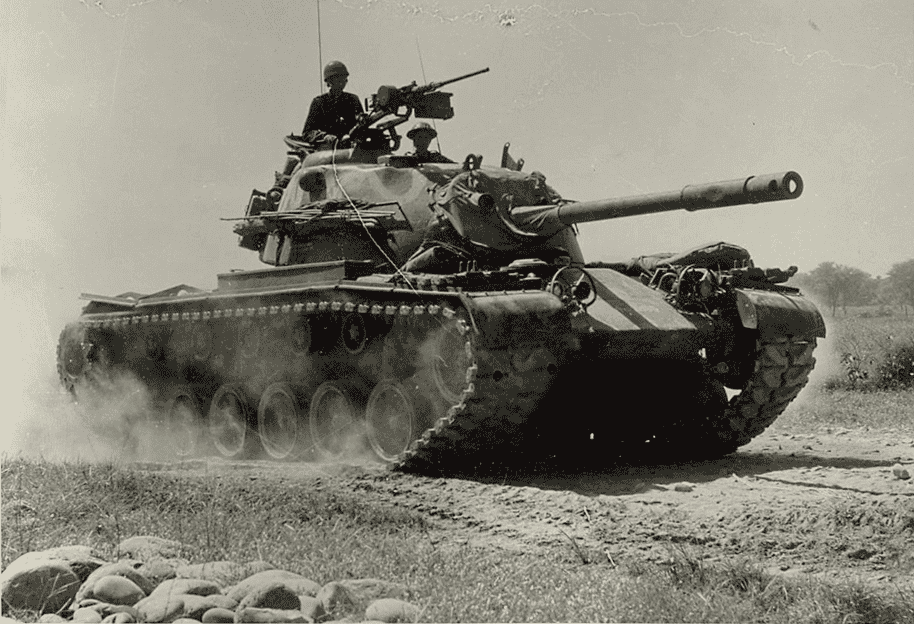
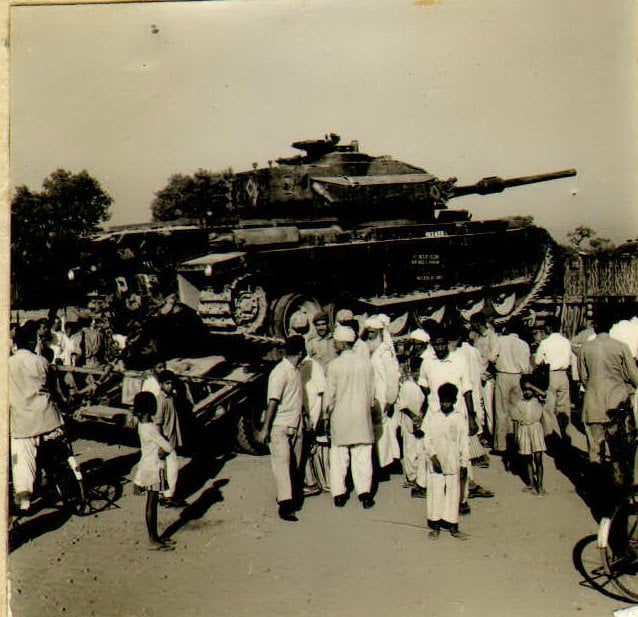
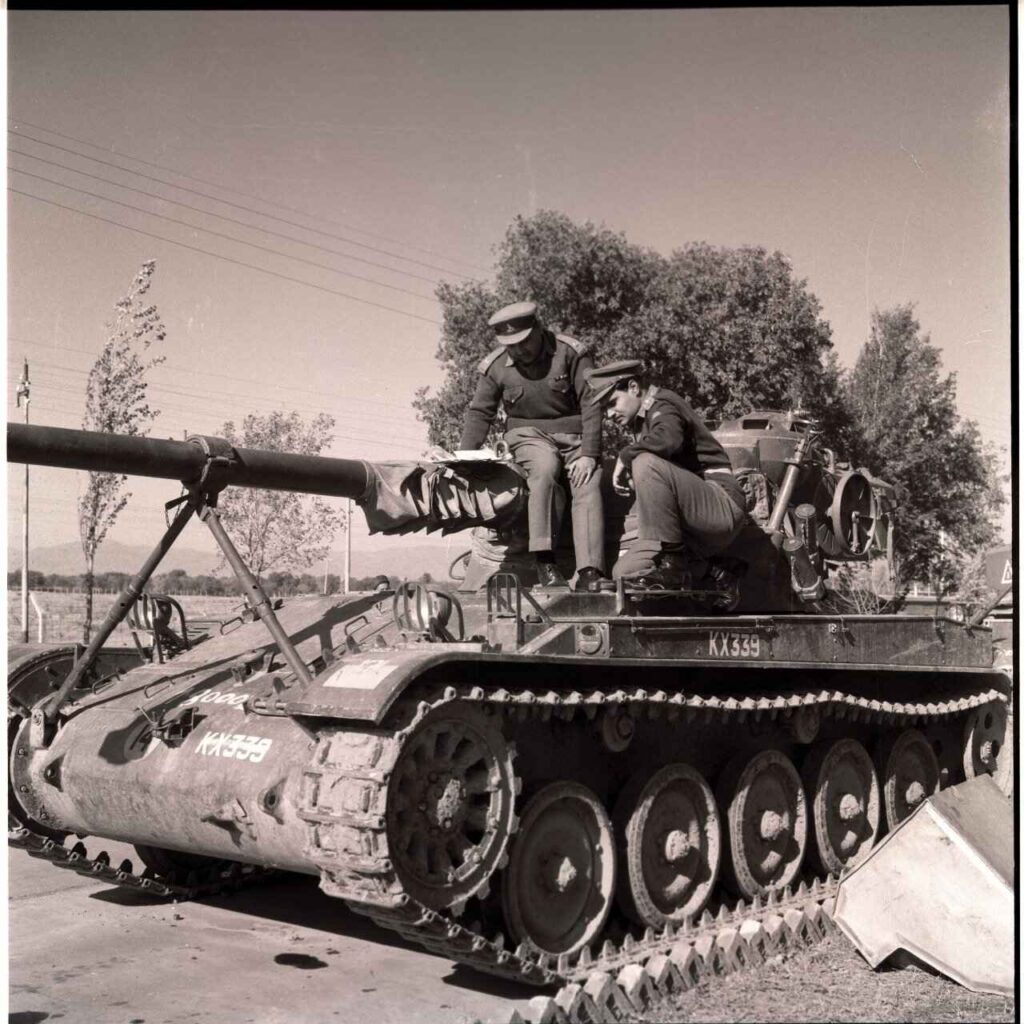
The Spirit of a Nation
The story of 1965 is not just about generals and battles — it is about an entire nation rising as one. Mothers sent their sons to the front with prayers on their lips, families donated blood without hesitation, women prepared food and stitched bandages with trembling yet determined hands, and students rushed forward to volunteer for any duty. Civilians opened their doors to shelter those fleeing from the borders, proving that Pakistan’s strength lay not only in its army but in every heartbeat of its people. Together, they showed the world that when the call of the homeland is heard, every Pakistani becomes a soldier.
1965 proved that Pakistan is not defended by soldiers alone, but by the undying spirit of a nation — a spirit that will forever echo: We live for Pakistan, and we are ready to die for Pakistan.
The Tashkent Agreement – A Pause, Not an End
After 17 days of ferocious fighting, with heavy casualties on both sides, international pressure forced a ceasefire. In January 1966, the Tashkent Agreement was signed between President Ayub Khan of Pakistan and Prime Minister Lal Bahadur Shastri of India, mediated by Soviet Union. Both sides agreed to withdraw to pre-war positions.
Conclusion – Beyond the Battlefields
The 1965 Indo-Pak War was not just a military confrontation—it was a test of Pakistan’s very existence. The untold stories of Major Raja Aziz Bhatti’s sacrifice, the armoured heroes of Chawinda, and the aerial brilliance of M.M. Alam reveal a nation that refused to bow to overwhelming odds.
6th September—Defence Day—is not merely a commemoration of battles fought. It is a reminder that beyond the fields of war, it was the courage, faith, and unity of Pakistanis that truly defined victory.
As long as we remember these sacrifices, Pakistan will continue to rise, no matter how great the challenges.
Pakistan Zindabad!
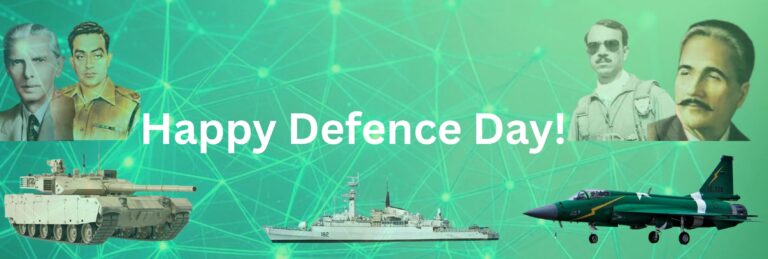
Frequently Asked Questions | FAQs
Q1: What sparked the 1965 Indo-Pak War?
The war was sparked by unresolved disputes over Kashmir and escalated after the Rann of Kutch clashes in April 1965, which became the trigger for the full-scale conflict.
Q2: Why is 6th September observed as Defence Day in Pakistan?
6th September is observed as Defence Day to honor the day in 1965 when Pakistan’s armed forces and citizens united to defend Lahore and other regions against India’s offensive.
Q3: Who was Major Raja Aziz Bhatti Shaheed and why is he remembered?
Major Raja Aziz Bhatti Shaheed was a Nishan-e-Haider recipient who led the defense of Lahore’s Burki sector for six days, ultimately sacrificing his life to protect the city.
Q4: What was the significance of the Battle of Chawinda?
The Battle of Chawinda, near Sialkot, was one of the largest tank battles since World War II. Pakistan’s forces, though outnumbered, halted India’s advance and turned the battle into a defensive success.
Q5: What role did the Pakistan Air Force play in the 1965 war?
The Pakistan Air Force (PAF) secured aerial dominance, denying India control of the skies and boosting national morale through daring victories in air combat.
Q6: Who was Squadron Leader M.M. Alam and what is his legacy?
Squadron Leader M.M. Alam, known as the “Falcon of Pakistan,” made history by shooting down five Indian aircraft in under a minute during a dogfight over Sargodha. He remains a national hero.
Q7: How did the 1965 war come to an end?
The war ended after 17 days of intense fighting through the Tashkent Agreement in January 1966, where both sides agreed to withdraw to pre-war positions under international mediation.
Q8: Why is the 1965 war significant for Pakistan today?
The 1965 war symbolizes Pakistan’s unity, courage, and resilience. Defence Day serves as a reminder of how, despite being outnumbered, the nation defended its sovereignty with unmatched determination.

